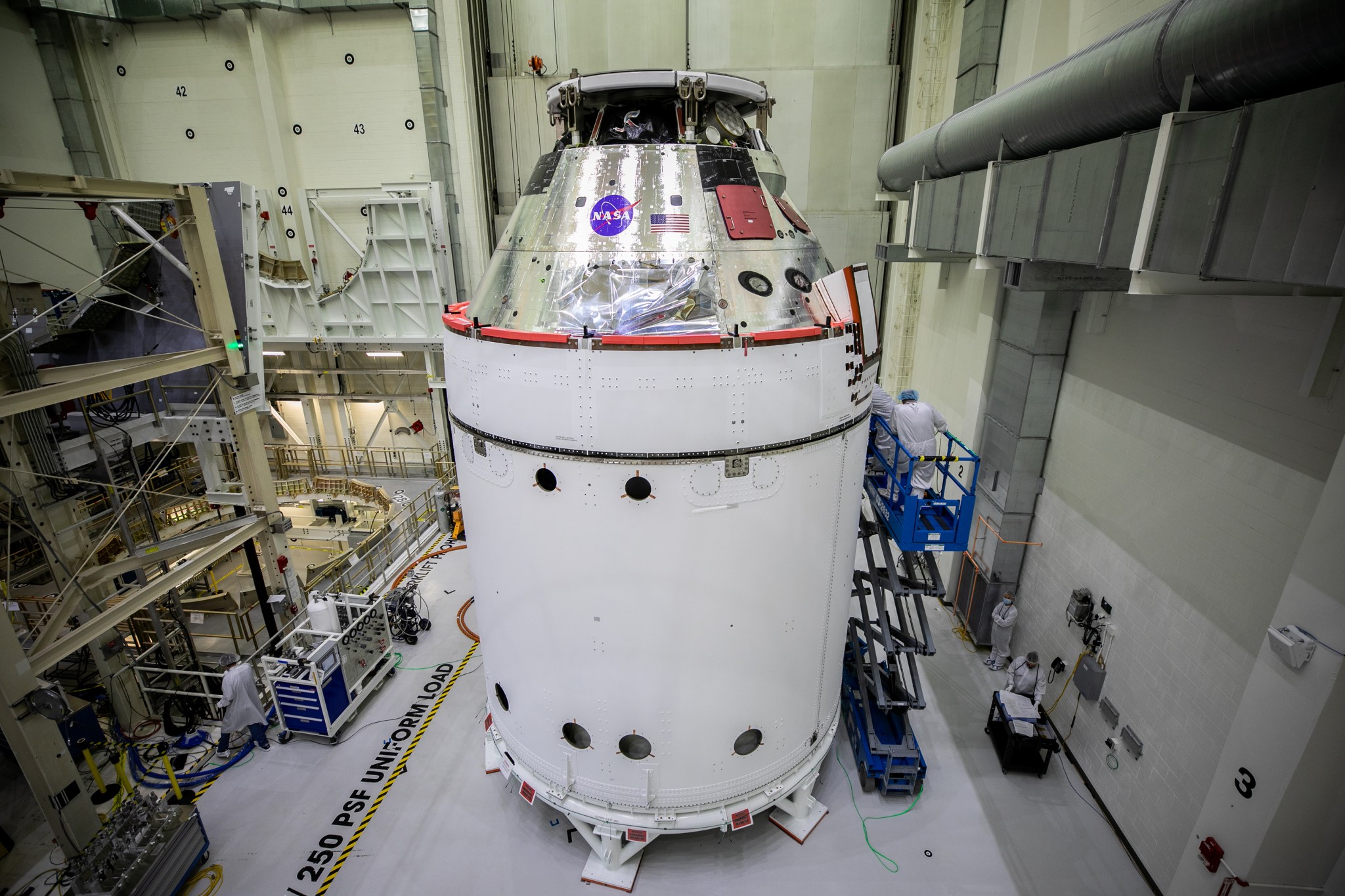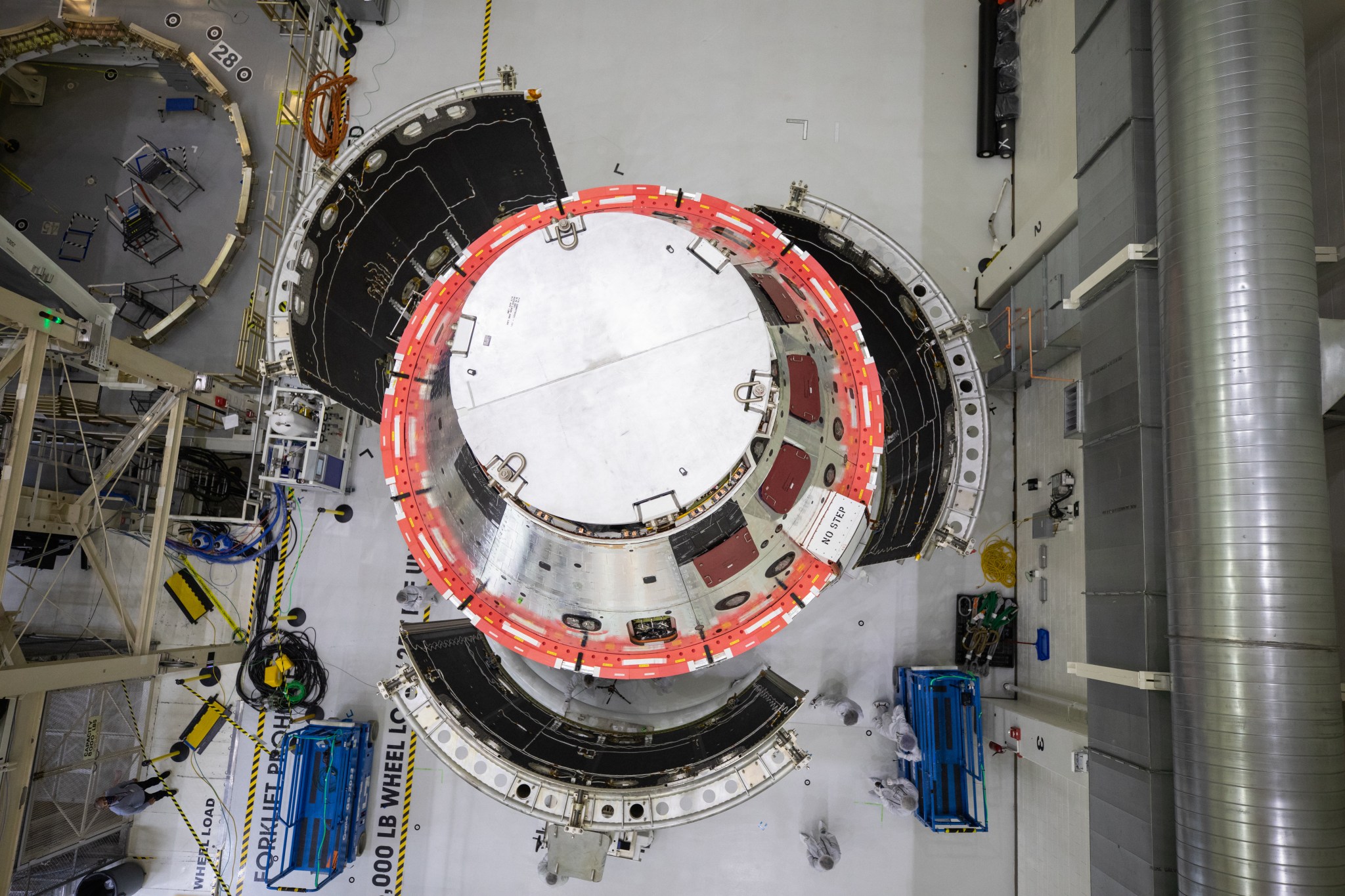
By Tiffany Fairley
NASA’s John F. Kennedy Space Center

Three spacecraft adapter jettison fairing panels have now been fitted onto Orion’s European Service Module as production accelerates inside the Neil Armstrong Operations and Checkout Building at NASA’s Kennedy Space Center in Florida. Teams from across the globe recently completed work to install the four solar array wings, which are housed inside the protective covering of the fairings. The panels were inspected and moved into place for installation by technicians with Lockheed Martin, the lead contractor for Orion. Once secured, they encapsulate the service module to protect it from harsh environments such as heat, wind, and acoustics as the spacecraft is propelled out of Earth’s atmosphere atop the Space Launch System (SLS) rocket during NASA’s Artemis I mission.
The fairing panels, each 14 feet high and 13 feet wide, are individually about the size of a one-car garage. The jettison panels will separate from the service module using a series of timed pyrotechnics, or firings, which will allow the solar array wings to unfurl and provide energy to propel and power the spacecraft for the duration of its mission.
The final assembly activities for the spacecraft include installation of the forward bay cover, which protects the upper part of Orion including its parachutes throughout its mission, final adjustments of the main parachutes, securing and testing of electrical connections, along with closure and latching of the side hatch. As each area of the vehicle is closed out, it will undergo final inspections to complete production. The spacecraft will then begin its path to the pad, including stops along the way to be fueled and integrated with its launch abort system and, ultimately, the SLS rocket for launch from Launch Pad 39B.
Artemis I will test the Orion spacecraft and SLS rocket as an integrated system ahead of crewed flights to the Moon. Under the Artemis program, NASA will land the first woman and the next man on the Moon in 2024.


























